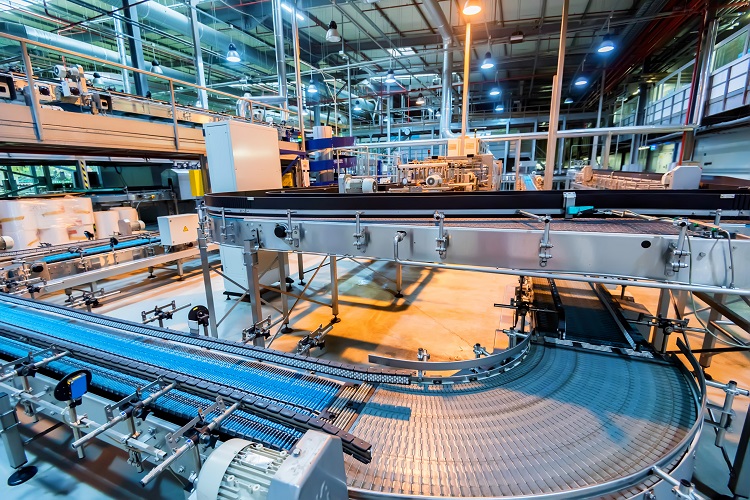Tips to Improve Your Manufacturing Facility

When visiting an Acuity customer, I walk their facility to help identify potential risks and hazards as well as any improvement opportunities.
My blog readers know I used to be a continuous improvement manger (CIM) and lean manufacturing is near and dear to my heart. Today, I’d like to discuss some ways manufacturers can improve their facilities (the actual boxes that house all the operations) and help reduce costs and stay ahead of potential issues.
Over the years, as manufacturers grow, many add floorspace or additional buildings. The expansions or buildings are considered fixed costs—business costs that are not directly attributable to any department or product but add to the overall cost of running the business. Also referred to as overhead, these costs are added to the actual production costs.
There are three things I recommend looking at to help manage and reduce fixed costs.
1. Your HVAC (heating, ventilation, and air conditioning) system
Buildings are often designed to meet heating, cooling, and ventilation requirements. However, once manufacturing starts and heat loads are added, HVAC systems can become overwhelmed, making temperature management difficult.
If your HVAC system only removes hot air, see if you can upgrade or add a waste heat recovery system. Waste heat recovery systems take the excess heat generated by equipment and reuse it somewhere else. A simple example is using a furnace or drying oven’s excess heat to warm part of a warehouse or heat water. It can even be converted to cooling air for a cold storage building.
To identify that kind of opportunity, you might need support from a consulting company. A good way to start is connecting with your energy company. Temperature management not only saves you actual dollars, but it also reduces fixed costs and increases profits. It can also help reduce the carbon footprint of your operation.
2. Plant communication
As companies expand, they often add cables, wires, or routers to ensure they can connect their high-tech machinery to data collection or analytic systems. That is a good time to reevaluate electronic communication and documentation systems.
When reviewing your systems, you should consider whether cloud or on-premises computing is better for your company or if a hybrid approach would work best. System security, capability, backup, and capacity must all be part of the review, as they can add cost or risk to your operation. This is another area where you might want to ask for outside help in evaluating what is right for your business. Digital technology is quickly evolving and has become a must for manufacturers. If you don’t have the necessary knowledge or resources, definitely seek outside support.
You should also consider what to do about maintaining your IT and OT systems. Does it make sense to fully manage in-house, partially manage in-house, or have a vendor manage it all? Reviewing your digital OT and IT structures and requirements should be an ongoing process, as technology, cyber threats, and requirements are continually changing.
3. Plant maintenance and upkeep
Building and system maintenance can add significant fixed cost expenditures to an operation. You should review if it makes sense to outsource some responsibility or if it is more cost effective to maintain control of all services. When doing this review, also analyze whether leasing equipment like fork trucks, air compressors, and copy machines could be more cost effective since those items can wear out, require frequent maintenance, or become outdated due to technology advances.
Often, a skeleton on-site crew can fix unplanned failures and maintain daily systems. You can outsource larger tasks and nondaily maintenance activities to a vendor. Technology can help if you upgrade equipment to have digital tracking and communication that allow you to see when maintenance is needed. Implementing a predictive maintenance program for your facility systems can be a money saver. If you don’t have the resources, a system that is managed and monitored by the vendor might be the right choice for you.
Reviewing your facilities and infrastructure on an ongoing basis is key to managing costs, implementing improvements, and operating in an efficient and environmentally friendly way.
When looking to reduce or manage costs, do not overlook facility costs.
An insurance company that cares about you and insuring the things you wish to be insured.
Get a Quote> Find an Agent>

